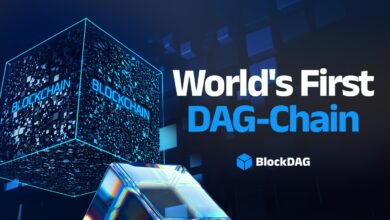
Revolutionizing Economic Data with TRUF.Network
Economic data has been a foundational element for decision-making across a range of sectors, from shaping government policies to influencing financial markets. However, traditional systems that supply this data often suffer from delays and are susceptible to manipulation. Introducing TRUF.Network by Truflation—a groundbreaking decentralized economic database designed to address these challenges.
Introducing TRUF.Network: A New Era in Economic Data
Launched just this week, TRUF.Network is set to transform how economic data is sourced, validated, and delivered. It provides DeFi developers with a wealth of authentic financial metrics derived from real-world data. This innovation is particularly significant for projects operating in onchain verticals like Real-World Assets (RWAs), Artificial Intelligence (AI), and prediction markets, positioning TRUF.Network as a highly anticipated debut in the industry.
Unique Features of TRUF.Network
At its essence, TRUF.Network functions as a web3 layer that aggregates and verifies economic data in real-time. It draws from over 30 million data points across more than 80 providers, offering comprehensive insights into crucial economic indicators such as inflation rates, commodity prices, and housing metrics.
The network provides daily updates on inflation, moving away from the outdated reliance on monthly data summaries. This real-time information enables DeFi platforms to incorporate accurate data for the creation of synthetic assets and inflation-resistant financial products.
A globally distributed network of node operators ensures data integrity by validating and computing metrics directly on the blockchain. This approach eliminates central points of failure and guarantees transparency in data accuracy verification.
Seamlessly Integrating Data Onchain
With the launch of TRUF.Network, Truflation is not merely focused on providing data; it aims to make both on- and off-chain data a valuable resource for diverse DeFi innovations. Developers can utilize raw metrics to develop bespoke financial indexes.
Data providers have the opportunity to monetize their contributions, ensuring that the quality of onchain information is both decentralized and widely accessible. A globally distributed network of nodes ensures redundancy and reliability.
This strategy transforms data from a static asset into an active, problem-solving tool. TRUF.Network offers localized inflation indexes for emerging markets and supports the creation of prediction markets based on commodity trends. For end-users, the advantages are clear—whether hedging against inflation or optimizing treasury management, TRUF.Network equips DeFi participants with actionable insights.
Enhancing Efficiency Through Transparency
Earlier this month, Stefan Rust, the founder of Truflation, wrote an open letter to the Department of Government Efficiency (D.O.G.E.), advocating for the adoption of Truflation’s tools to enhance financial transparency and streamline economic policies. He highlighted Truflation’s success in Argentina, where it serves as an independent verifier of inflation metrics, as an example of blockchain technology’s potential.
Rust identifies a parallel between the Elon Musk-led D.O.G.E. and Truflation, as both entities are committed to restoring public trust by ensuring greater transparency in economic decision-making. While it remains uncertain if the agency will accept his proposal, the open letter underscores Truflation’s ambition to go beyond the DeFi space and become a transformative force in advocating for independent economic data.
Overall, TRUF.Network is poised to redefine the landscape of economic data, offering a transparent, decentralized solution that empowers DeFi developers and users alike with reliable and actionable insights.







